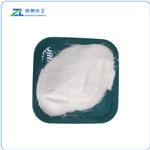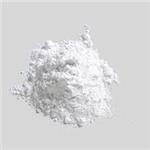In line with the Enzyme Commission number (EC number), ‘‘EC1.1.3.4’’ refers to glucose oxidase.
Glucose oxidase, also known as notatin, is a secreted enzyme synthesized predominantly in several species of insects and fungi, such as Aspergillus and Penicillium species which oxidizes glucose into glucolactone, converting oxygen into hydrogen peroxide in the process. Nowadays, glucose oxidase is widely used in diagnostics for measuring the amount of glucose in body fluids, which has made glucose measurement fast, easy, and inexpensive, because of which, it is effective to reduce a variety of complications of diabetes since measures can be taken if the glucose level is tested beyond the standard. Besides, in the last few years, glucose oxidases has become commercially essential in various fields, which can be applied in chemical, pharmaceutical, food, beverage, and other industries.
https://en.wikipedia.org/wiki/Glucose_oxidase
https://pdb101.rcsb.org/motm/77
https://www.ebi.ac.uk/interpro/potm/2006_5/Page1.htm
Produced by the controlled fermentation of Aspergillus niger var.
as a yellow to brown solution or as a yellow to tan or off-white
powder. Soluble in water, the solutions being light yellow to
brown, but practically insoluble in alcohol, chloroform or ether.
The major active principle is glucose oxidase, IUB No. 1.1.3.4,
CAS No. 9001-37-0.
Glucose Oxidase from
Aspergillus niger has been used:
- in the (glucose oxidase) GO reagent to measure the glucose content by the glucose oxidase (GO) method
- to activate the human renal carcinoma cell line for constructing the oxidative stress model
- to study its influence in the paste on the analytical performance of the bioelectrode
glucose oxidase is an enzyme used to help stabilize a formulation. It can also improve skin feel and condition.
Analytical reagent for the selective determination of glucose. Food additive for the removal of glucose during the preparation of dried egg products. Antioxidant in food and food wrappers. Stabilizer for ascorbic acid and vitamin B12.
An enzyme commercially available under various trademarks; catalyzes oxidation of glucose to gluconic acid. Water-soluble amorphous powder. Removes excess oxygen from canned foods, beer, etc., and from stored food.
Mass of glucose oxidase (GOX), a flavoprotein ranges from approximately 130 to 175?kDa. Some fungi and insects are capable of producing GOX.
Flammability and Explosibility
Not classified
In nature, the enzymes glucose oxidase (GOx) or
glucose dehydrogenase (GDH) are used as biosensors for blood glucose monitors.
Glucose oxidase catalyses the oxidation of β-d-glucose to d-glucono-β-lactone and hydrogen peroxide, with molecular oxygen as an electron acceptor.
The oxidase is purified by dialysis against deionized water at 6o for 48hours and by molecular exclusion chromatography with Sephadex G-25 at room temperature. [Holt & Cotton J Am Chem Soc 109 1841 1987.]


